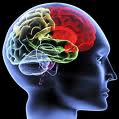In recent years there has been a lack of clear criteria within the military for diagnosis and treatment of PTSD and this resulted in the reversal of close to 40 percent of PTSD diagnoses. There is some evidence that 15-20% of all returning combatants from OEF/OIF and Afghanistan have PTSD, and this has led to a concerted effort by the Department of Defense (DOD) and the Department of Veterans Affairs (DVA) to improve the situation.
It was recently announced that traumatic brain injury (TBI) and post-traumatic stress disorder (PTSD) will begin using new criteria for diagnosis and treatment in the military, DOD, and by DVA at VA hospitals. Both the DOD and DVA announced last month an investment of more than $100 million for research into improving diagnosis and treatment of mild TBI (mTBI) and PTSD. Two groups, the Consortium to Alleviate PTSD (CAP) and the Chronic Effects of Neurotrauma Consortium (CENC) will be jointly managed by VA, and by the Congressionally Directed Medical Research Programs (CDMRP), on behalf of the DOD. According to Assistant Secretary of Defense for Health Affairs Jonathan Woodson, “these consortia will bring together leading scientists and researchers devoted to the health and welfare of our nation’s service members and veterans.” He added, “a primary goal of CENC is to
As reported in Time online:
– For PTSD, CAP “will study potential indicators of the trauma, as well as prevention strategies, possible interventions, and improved treatments. Biomarker-based research will be a key factor in CAP’s studies,” the CDMRP says. PTSD afflicts some troops after combat tours, and causes anxiety, depression and other mental ills.
– For mTBI, CENC will try “to establish an understanding of the after-effects of a mTBI. Potential comorbidities also will be studied; that is, conditions associated with and worsen because of a neurotrauma,” the CDMRP says. TBI is a physical wound – a concussion – usually suffered by troops near the shock waves of an improvised explosive device. It can bruise the brain and cause mood changes, fatigue and sleeping more – or less – than usual.
